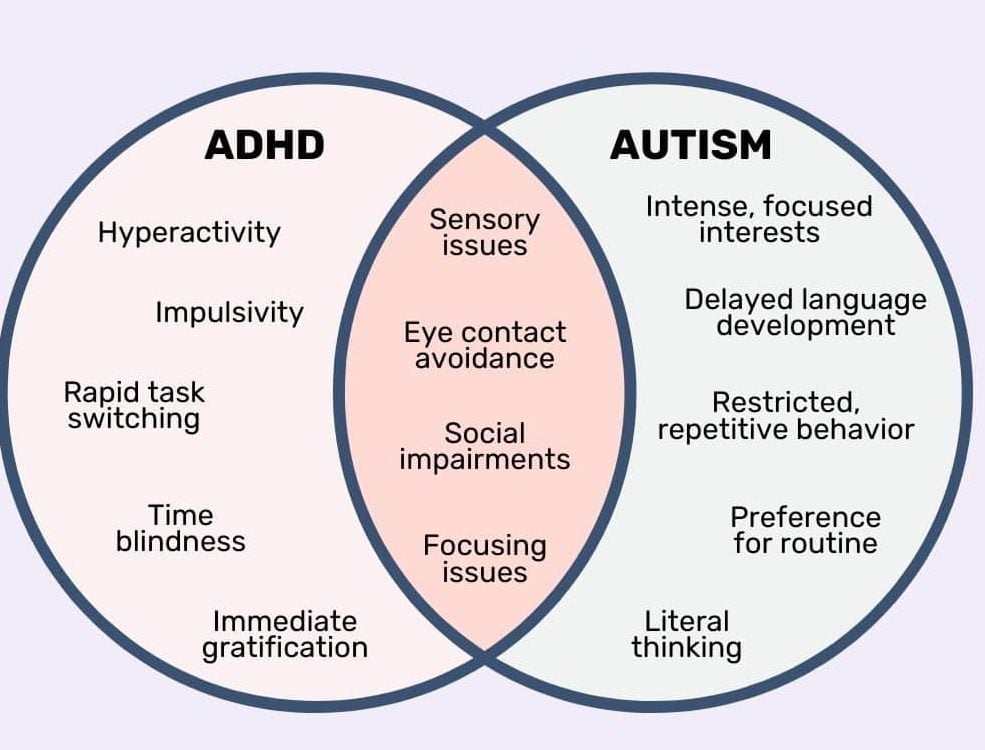ADHD and ADD are neurodevelopmental conditions affecting both children and adults. ADHD is characterized by symptoms of inattention, hyperactivity, and impulsivity, while ADD primarily manifests as attention and focus difficulties.
Symptoms of ADHD:
- Inattention: Difficulty sustaining focus on tasks and organizing activities.
- Hyperactivity: Restlessness, fidgeting, and constant need for movement.
- Impulsivity: Acting without considering consequences.
- Forgetfulness: Misplacing items and struggling with time management.
- Lack of organization: Difficulty prioritizing tasks and managing time.
- Difficulty with instructions: Overwhelmed by multi-step directions.
- Distractibility: Easily distracted by external stimuli.
Symptoms of ADD:
- Inattention: Struggle with focus, reading, and completing tasks.
- Daydreaming: Excessive internal fantasy life.
- Difficulty with organization: Problems with time management.
- Forgetfulness: Misplacing items and forgetting instructions.
- Impaired working memory: Difficulty holding and applying information.
- Slow processing speed: Challenges in quickly absorbing and responding to information.
- Difficulty with task initiation: Trouble starting and maintaining motivation.
ADHD includes hyperactive and impulsive behaviors, while ADD is more internally focused. Consult a healthcare professional for diagnosis and management strategies.
This post was originally published on Feb. 4, 2023. It was updated on May 29, 2023.











